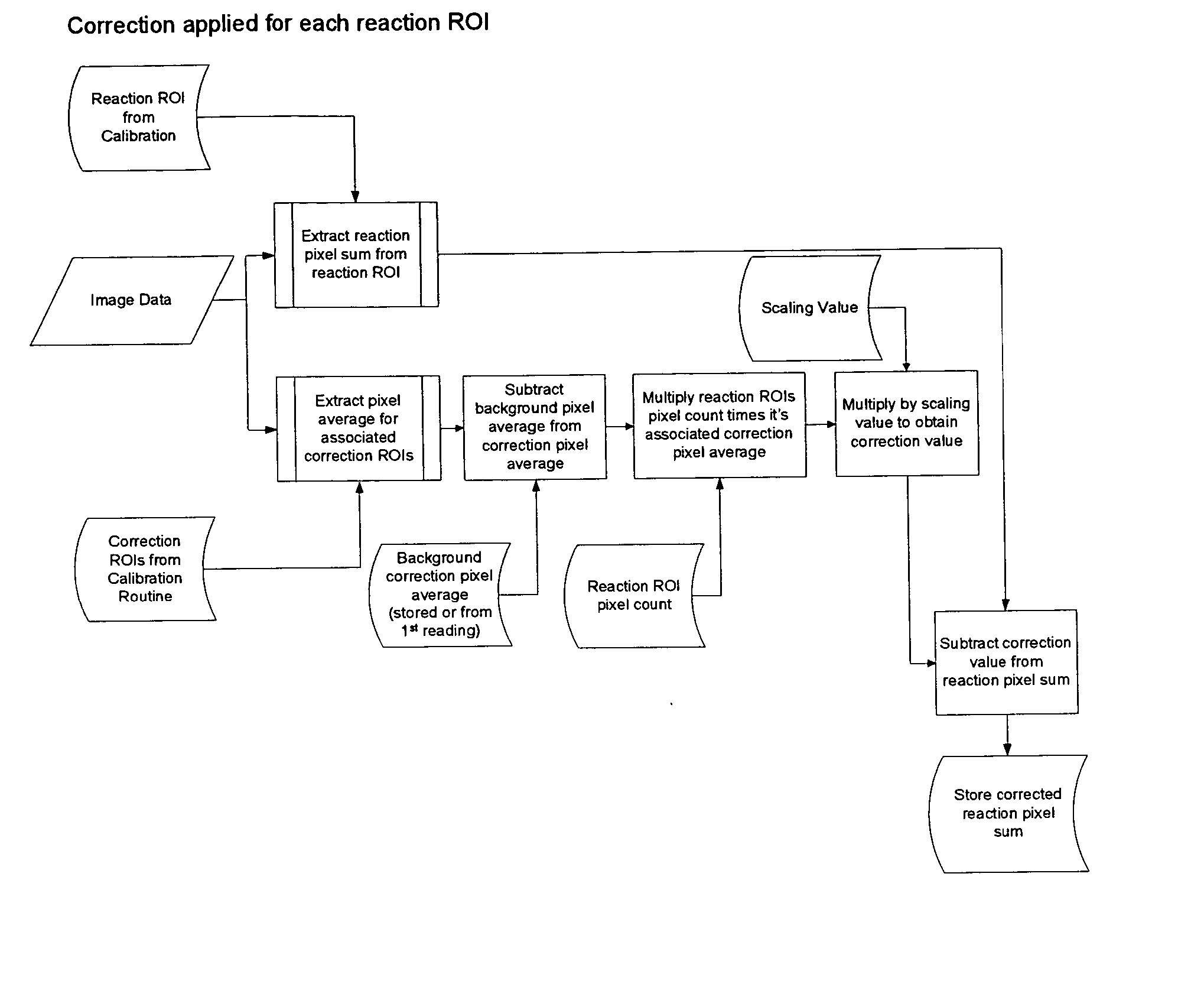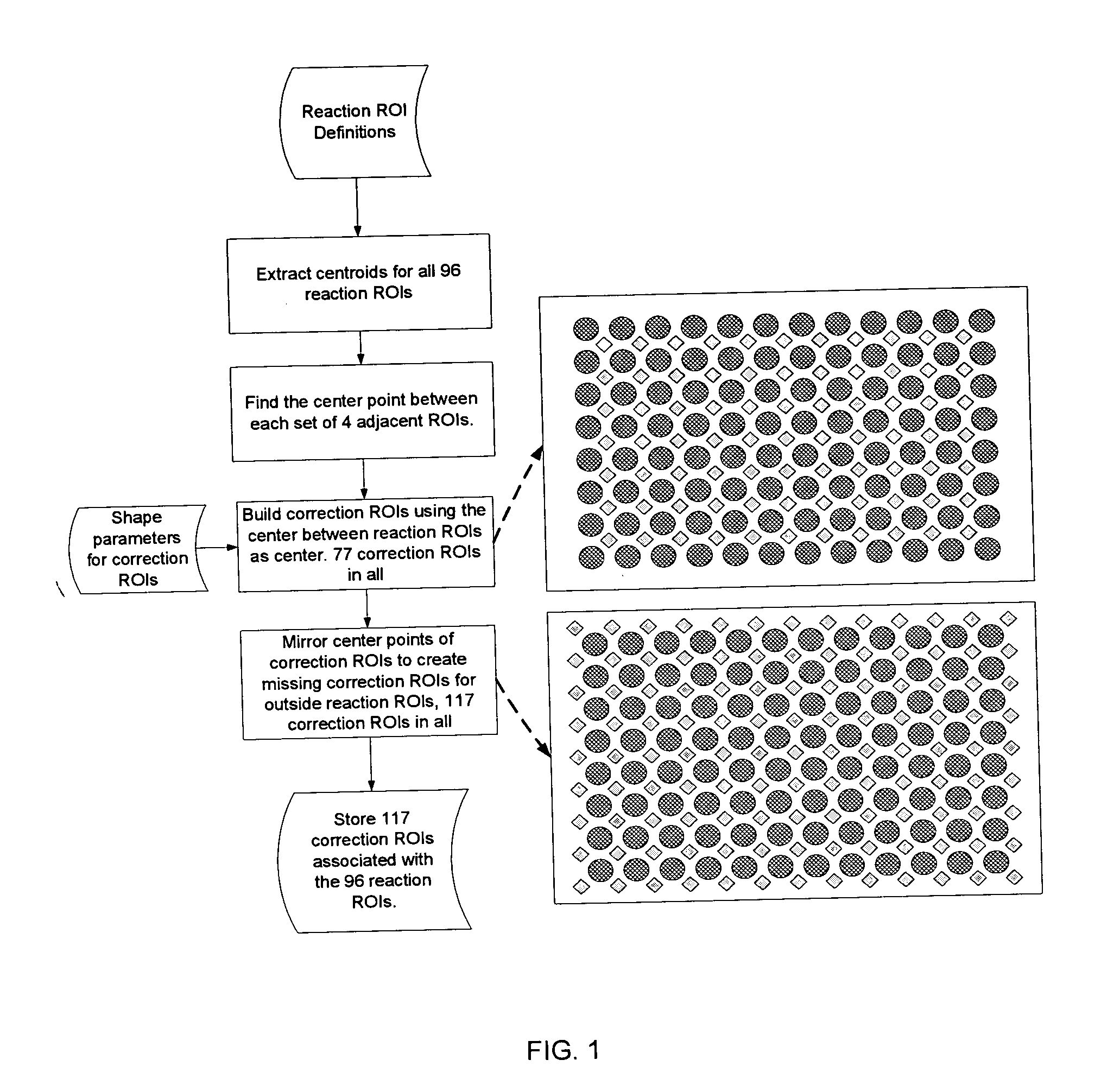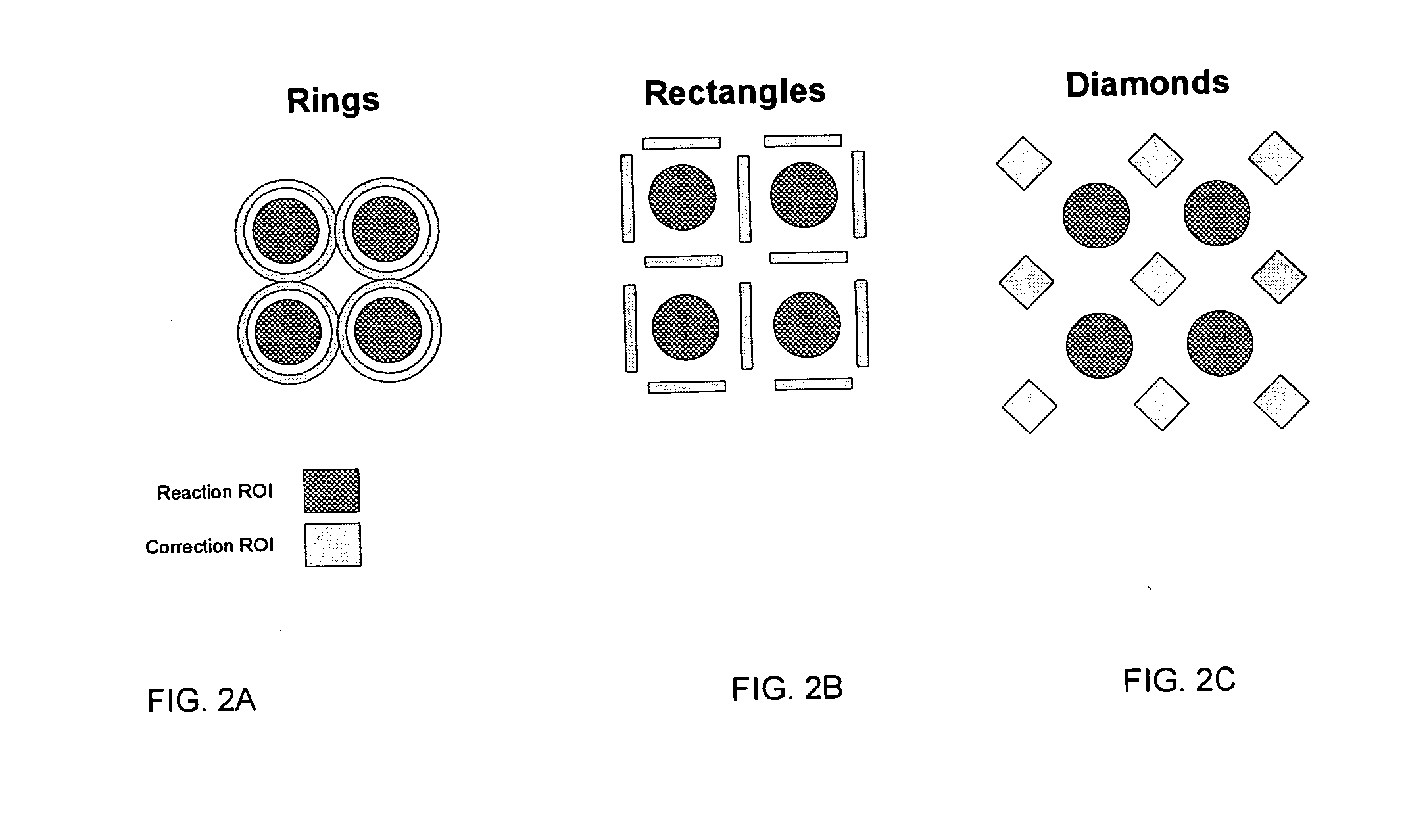Image based correction for unwanted light signals in a specific region of interest
- Summary
- Abstract
- Description
- Claims
- Application Information
AI Technical Summary
Benefits of technology
Problems solved by technology
Method used
Image
Examples
example
[0044] A real time PCR run for HIV was performed on an ABI Prism 7500 instrument (Applied Biosystems, Foster City, Calif.). This instrument utilizes a 96-well plate format with wells arranged in a 12×8 array. The run was configured so that there were 84 wells containing positive samples with a concentration of 1×106 copies / mL and 12 wells not containing positive samples, i.e., negative wells. The negative wells were distributed on the plate to maximize the potential cross-talk from the wells containing positive samples. FIG. 4 illustrates the layout of the plate.
[0045] The ABI Prism 7500 instrument uses a CCD camera and measures fluorescence in five wavelength bands. FIG. 5 shows one image from the end of the PCR run. FIG. 6 shows the same image with the reaction regions of interest and the regions of correction superimposed. In this example, a diagonal array of diamond-shaped regions of correction, each of which contained of 25 pixels, were used. The first reading in the PCR run w...
PUM
 Login to View More
Login to View More Abstract
Description
Claims
Application Information
 Login to View More
Login to View More - R&D
- Intellectual Property
- Life Sciences
- Materials
- Tech Scout
- Unparalleled Data Quality
- Higher Quality Content
- 60% Fewer Hallucinations
Browse by: Latest US Patents, China's latest patents, Technical Efficacy Thesaurus, Application Domain, Technology Topic, Popular Technical Reports.
© 2025 PatSnap. All rights reserved.Legal|Privacy policy|Modern Slavery Act Transparency Statement|Sitemap|About US| Contact US: help@patsnap.com



